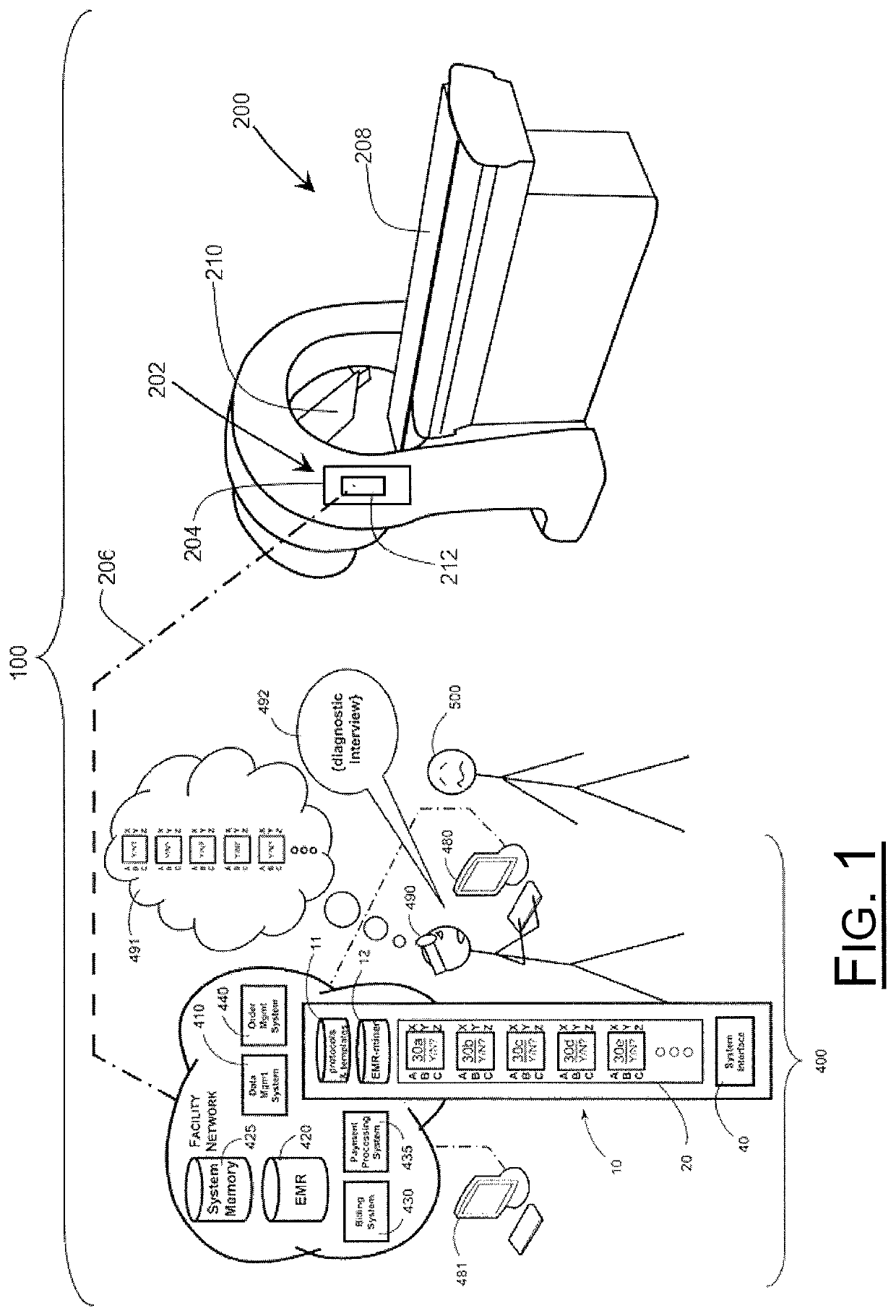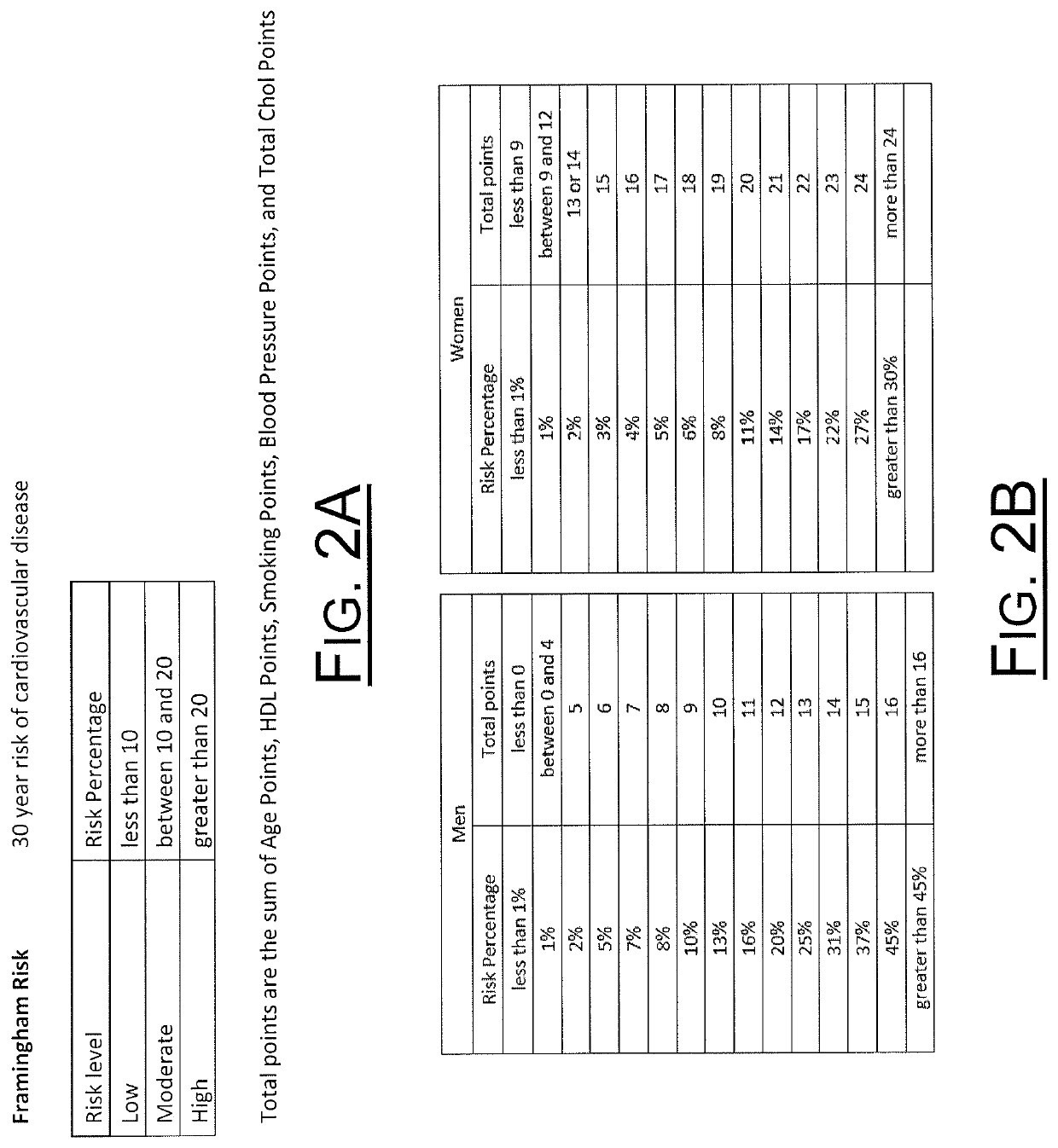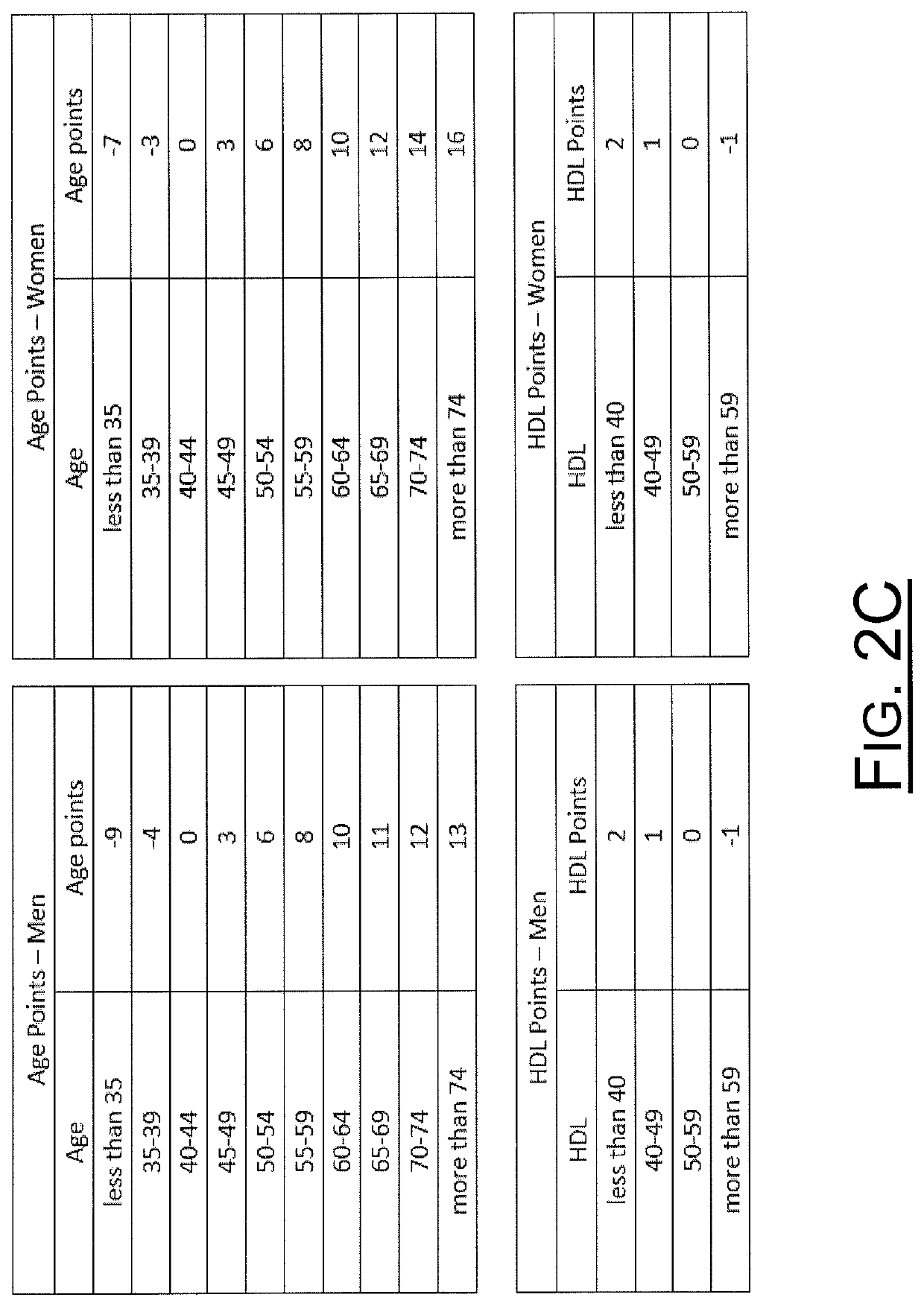System and method for optimizing nuclear imaging appropriateness decisions
a technology of appropriateness decision and system, applied in the field of health care risk management, can solve the problems of huge unmet need for technology to solve the crisis, huge unmet need for more efficient-yet-effective solutions, and enormous challenge in the direction of optimal management of healthcare, so as to reduce costs, manage costs, and achieve efficient and effective determinations
- Summary
- Abstract
- Description
- Claims
- Application Information
AI Technical Summary
Benefits of technology
Problems solved by technology
Method used
Image
Examples
Embodiment Construction
[0026]FIGS. 1-8D are provided to help illustrate and illuminate aspects of preferred and alternative embodiments of the present invention. Although somewhat redundant in various respects, also attached as Appendix A (incorporated here in its entirety by this reference) is a compilation of supplemental information that may help to further illuminate aspects of preferred and alternative embodiments for the benefit of those having ordinary skill in the art.
[0027]The present invention provides and enables straightforward methods and systems by which healthcare professionals can determine whether, when and how nuclear imaging is likely to be suitable and appropriate as a risk assessment tool for a particular patient. Preferred embodiments are particularly adapted for use in helping determine a reliable and practical variation of a patient's current FRS and using as much, together with other scores and factors, to guide and support the nuclear imaging and clinical decision process in rela...
PUM
 Login to View More
Login to View More Abstract
Description
Claims
Application Information
 Login to View More
Login to View More - R&D
- Intellectual Property
- Life Sciences
- Materials
- Tech Scout
- Unparalleled Data Quality
- Higher Quality Content
- 60% Fewer Hallucinations
Browse by: Latest US Patents, China's latest patents, Technical Efficacy Thesaurus, Application Domain, Technology Topic, Popular Technical Reports.
© 2025 PatSnap. All rights reserved.Legal|Privacy policy|Modern Slavery Act Transparency Statement|Sitemap|About US| Contact US: help@patsnap.com



